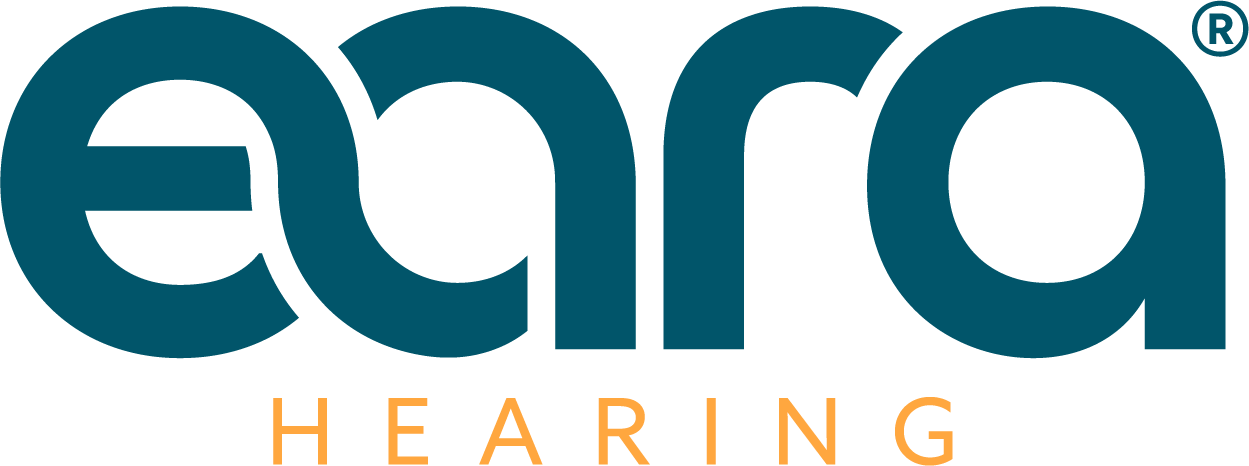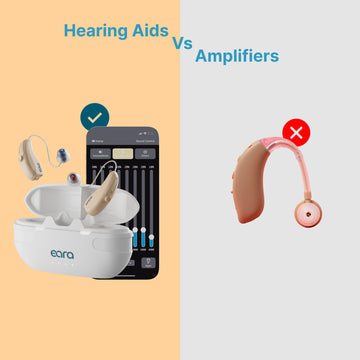If you’ve ever felt confused by all the hearing devices out there, you’re not alone. The truth is not everything labeled a “hearing aid” is one. Some of these devices are basic amplifiers designed to resemble hearing aids, and that difference matters more than you might think.
As an audiologist, I’ve seen firsthand how easy it is to get mixed up by all the options in the hearing aid market. One of the most common, and important misunderstandings is the difference between true hearing aids and basic sound amplifiers. Amplifiers are often marketed as hearing aids, but they lack the personalization, professional support, and long-term hearing care that real hearing aids provide. And while it might seem like a small distinction, it can have a big impact on your hearing health and overall quality of life.
This article will explore the differences between true hearing aids and basic amplifiers; revealing why this distinction matters for your hearing health, how to identify what you're buying, and how to choose the solution that best fits your hearing needs and lifestyle.
Understanding Hearing Loss
Before we talk about hearing devices, we need to understand hearing loss. Hearing loss exists on a spectrum, and knowing where you fall is key to finding the right support.
Hearing is measured in decibels (dB), which reflects how loud a sound needs to be for you to hear it. The higher the number, the louder the sound has to be for your brain to register it.
Here’s a quick breakdown of hearing loss levels:
| Degree of Loss | Decibel Range of the Softest Sounds You Hear (dB) | Sounds you can no longer hear without hearing aids | |
|---|---|---|---|
| Slight | 16 - 25 |
|
|
| Mild | 26 - 40 |
Soft appliance hums, words, or certain consonants |
|
| Moderate | 41 - 55 |
Louder appliances, conversation at low volumes |
|
| Moderately Severe | 56 - 70 | Footsteps, barking, speech at any volume, doorbells | |
| Severe | 71 - 90 |
Passing motorcycles, sirens |
|
| Profound | 91+ | Alarms, extremely loud music |
Hearing loss doesn’t just vary in severity, it also varies by frequency. The average human ear hears between 20 and 20,000 Hz, but many lose sensitivity to certain parts of that range. Two people with the same level of hearing loss may hear very differently in real life.
Curious about your hearing profile? You can take our free online hearing test and receive an audiogram by email to better understand how you hear across different frequencies.
What differentiates a true hearing aid from amplifiers?
If you’ve looked at the hearing loss chart earlier, you’ve seen how different types and degrees of hearing loss are measured: mild to profound, and sometimes affecting only specific frequencies. It’s like vision problems: some people have trouble seeing things far away (nearsighted), others struggle with things up close (farsighted), and many fall somewhere in between.
"Imagine if everyone with vision issues were handed the same off-the-shelf pair of magnifying glasses. No eye exam, no prescription, just lenses that make everything a little bigger. Would that help you see more clearly? Probably not. In fact, it could make things blurrier or more uncomfortable."
That’s essentially what happens when someone with hearing loss uses a device that amplifies all sounds equally. These devices might be marketed as hearing aids but don’t adapt to your hearing profile. They don’t know which frequencies you struggle with, and they can’t be adjusted to meet those needs. They simply make everything louder. And because they lack the technology and personalization true hearing aids offer, they’re often sold at very low prices.
To be clear, we’re not talking about PSAPs (Personal Sound Amplification Products). PSAPs are legitimate products for recreational use; birdwatching, hunting, or listening to lectures from a distance. They’re more like sunglasses: useful for specific situations, but not designed to correct a medical issue. They have their place, and they’re not pretending to be something they’re not.
The real problem lies with devices marketed as hearing aids, but don’t include the technology or support required to treat hearing loss effectively. This is where many people get misled.
Here’s a clearer breakdown:
-
Prescription hearing aids are custom-fit by licensed audiologists. You receive a hearing test, and the devices are programmed to match your unique hearing profile. These are typically fit in a clinic setting, with ongoing adjustments as your needs evolve.
-
OTC (over-the-counter) hearing aids are a newer category, designed for adults with perceived mild to moderate hearing loss. The best OTC devices allow for customization, often via a paired app that administers a hearing test and tailors the amplification to your specific needs. But here’s the important part: the most effective OTC brands are backed by audiological support, not just basic customer service.
That’s where our team at Eara stands apart. Our Explore Li+ self-fitting Bluetooth hearing aids combine smart, app-based customization with the backing of a professional audiology team. When you purchase from Eara, you get expert support, remote fitting, and guidance tailored by licensed audiologists. All included, at no extra cost. -
Some devices look like hearing aids and are often marketed with familiar terms but they don’t offer the features that make true hearing aids effective. These products typically don’t include a hearing test, don’t adapt to your unique hearing profile, and aren’t designed to adjust to your needs over time. While they might amplify sound, they do so uniformly, without the personalization that makes a real difference in everyday listening. In these cases, you're getting a basic amplifier not a hearing aid in the truest sense.
When it comes to hearing loss, louder isn’t always better. What you need is clarity, this only comes from devices and support systems designed with your specific hearing needs in mind.
How to Spot a True Hearing Aid
There are a few non-negotiables that every true hearing aid should offer. Below, we’ve outlined what to look for, plus included a downloadable checklist to take with you.
| Feature | True Hearing Aid | Basic Amplifier | |
| Hearing Test | App-based or in-clinic personalization hearing test | No hearing test | |
| Frequency Customization | Adjusts amplification based on hearing profile | Amplifies all sounds equally | |
| Professional Support |
|
Customer support only | |
| Adaptive Technology | Adjusts to environment | Static volume only | |
| App Intergration | Often includes mobile app for fine-tuning | Rare or nonexistent | |
| Long-term Adjustability | Can be reprogrammed as needs change | No reprogramming |
Use Eara’s downloadable checklist to compare features, avoid common pitfalls, and make confident choices when evaluating hearing aids. Download Checklist
Selecting the right hearing aid ensures that your hearing health is properly supported. While it may seem tempting to opt for a cheaper device, the wrong choice can have negative long-term effects, especially if the “hearing aid” amplifies all sounds rather than addressing your specific hearing needs.
To summarize the key points:
-
Not all devices marketed as hearing aids offer the personalized support essential for effective hearing improvement.
-
True hearing aids are carefully tailored to your hearing loss profile, considering both frequency and degree.
-
Professional fitting and ongoing audiological support are crucial to achieving optimal results.
-
The best OTC hearing aids provide a customizable experience, access to audiological expertise, not just basic customer support.
At Eara, we prioritize providing expert guidance alongside our self-fitting Explore Li+ hearing aids, ensuring you have the tools and support necessary for better hearing.
Your hearing is an important part of how you engage with the world. Make sure you choose the right solution to help you hear clearly and live confidently.






















